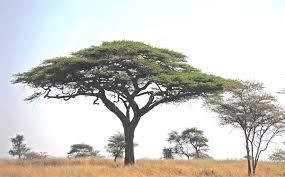Actually, it’s more like 10 billion, but that doesn’t sound sufficiently romantic.

I’m speaking about Egypt and the ancient history of linen fabric there. I had been to parts of Egypt many years ago, but this trip focused heavily on history and archeology, and included many visits to tombs and multiple outdoor sites with extensive carvings and hieroglyphs. What struck me was the sheer number of images of clothing made of linen that had been heavily pleated.
While wool was available, and cotton could have been imported from the Sudan, it was linen that was the fiber of choice in ancient Egypt. It was ideal for that hot summer climate, and clearly thousands and thousands of yards of fabric were produced.
I don’t know what the early Egyptian word for linen might have been, but it seems quite appropriate that the Latin derivation means, “most useful.” Leaving out the amount of work required to take the flax plant from seed to fiber useful for spinning, it seems like a perfect description.
The pleats I mentioned above are very prominent on the kilts worn by males (left), and both clearly visible and sometimes shown as nearly transparent on some of the women’s clothing (below).

I thought a lot about how the pleats might have been set to hold the folds. There are no written records (despite acres of hieroglyphs on both tombs and public buildings, not to mention papyrus) to provide a clue to what might have been used to fix the pleats. No testing has been done that reveals the answer, although starch is an obvious guess. The other suggestion might be gum arabic, a natural gum made from the sap of two species of acacia tree.

Native to Africa, the acacia gum was used to adhere lengths of papyrus together to form scrolls like the so-called “Book of the Dead,” a 52-foot long papyrus found in a tomb at Saqqara.

A section of the papyrus scroll from Saqqara

As I began to focus more and more on the images of clothing, I became transfixed by the variety of dress, not so much in the shapes or styles, but in the colors and decorations.
A fair amount is known about the available dyes, and I won’t go into that here. Apparent in surviving wall paintings, clothing is very colorful, and at least some of the garments appear to have been embroidered, and others to have been block printed.



Left: The interior of a wooden coffin painted to show the elaborate clothing and jewelry of the deceased, including a large head piece, necklaces, a cloak, and a dress tied with a long sash.

The miles of linen thread woven into fabric in Egypt over more than 3 centuries was all spun using suspended spindles. We actually know quite a bit about the manufacture of fabric from tomb paintings, as well as models of weaving workshops found among grave goods.

Left: The linen tunic here appears to have the horizontal pleats stitched down, but those lines of stitching actually are part of the preservation technique used to stitch the fragile fabric to a supportive backing.
Above: This painting from the tomb of Khnum Hotep shows a woman spinning flax from a suspended spindle.

Left: The upright, or vertical loom appears to appear during the New Kingdom (1550-1069 BCE), while the horizontal, or peg loom is the earliest type.
Below: Models of everyday life often were included in tombs, so that when the soul of the deceased was reincarnated, all of the materials necessary to lead a full and pleasant life would be there. Presumably the people in the models would be revived to full size to continue their work and trades along with the tomb occupant. This model of a weaving workshop shows flax being prepared for spinning, multiple workers using spindles, and a loom with yardage in progress.

There is so much more to tell, but I want to send this out to you because I’ve been away so long, and would like to get back into a rhythm of regular posting. In part two of this series, I’ll have more to say about linen, and will circle back to what I was working on before I left on the trip.
Meanwhile….
Keep calm and craft on.
I love trips where you can learn so much about life in ancient times. Fantastic pictures. Thank you for posting.